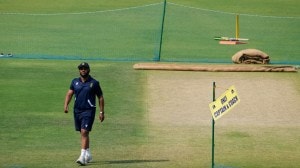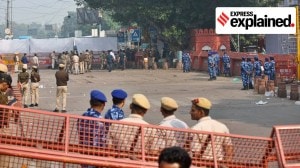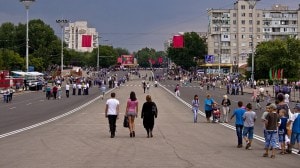India is a statistical giant
With the Budget and the Economic Survey, this becomes the silly time of the year, regarding economic and statistical information. Everybo...

With the Budget and the Economic Survey, this becomes the silly time of the year, regarding economic and statistical information. Everybody is an expert. If they like the facts, they quote them.
If not, the Central Statistical Organisation (CSO) is fair game and the boys in the National Income Division are lambasted and the more senior the political person, bureaucrat (usually former), or journalist, the more vocal they are. At present, there are some real difficulties in measuring annual growth rates for agriculture, the informal and unregistered sectors. But this does not justify attacks on the system.For the last couple of years the CSO, apart from measuring the past, has also been forecasting’ the present. So before the year 1998-’99 is over, they estimated that the GDP for the year stood at Rs 11,100 billion. To begin with, it has to be appreciated that since these are advance’ estimates, the CSO is very clear that they are not as firm as, say, the quick’ estimates for 1997-’98 released by them onFebruary 3, particularly since the 1998-’99 fiscal is not yet over. The answer to that question lies in the current phase of economic policy making we are going through and has to be understood by each one of us. As long as decision-making was controlled and centralised, the need for large-scale dissemination of economic and financial information was less severe. Notice the word dissemination’. Information was collected and used but not widely circulated.
In fact, even earlier, the Economic Survey would give an assessment of prospects, also the RBI of trends and progress’. In fact, not more than a decade ago the Planning Commission also had a short-term forecasting model developed by Jayanta Roy and Manohar Rao and they used to give their numbers in the Annual Plan, but now, unfortunately, the Annual Plan is published after the year is over. Outside the government, the NCAER, CMIE and others give their version of what’s going on. If output, investment, imports and in many cases prices were controlled, theneed for widespread use of contemporaneous information was less. But now these decisions are by and large made by farmers, companies, small industries, traders and others and they need to know the developments in their sector, those who supply them and those who demand from them. India is liberalising but it is being dragged through the process and the understanding of the requirements is thin. Countries all over the world forecast the present and the near future and use these with the necessary caution. It was against this backdrop that the IMF invited us to join the global data dissemination system.
More than 30 countries are now a part of this system, including the major developing countries. India, which has a strong statistical tradition has to be a part of this system and, in fact, when we accepted the idea, I was clear we will play a major role in this effort. I am not particularly in the Brettonwoods tradition but as minister strongly supported this initiative.
The question can be asked as to whythe CSO should at all get into the forecasting business, since its forte is the past. Why not leave this messy forecasting business to the professionals, consulting groups and Lachman Das Madan? To begin with, it should be noted that we are not talking of even the short-term future like a year or two away. That should be left to the others. We are talking of the immediate next time and anybody who does this will have to go back to the CSO for information, on the year that is already on the make, as it were half done. So the CSO is the logical template.
If you accept the need then many of the critiques do not count for much. Many commentators will criticise the estimates with hindsight, that is after the event with information that became available later. The congenital pessimists will always say the forecast was high. The remaining issues are real. The CSO has published the methodology it follows. It goes by the advice of a professional National Income Advisory Committee, of which I have had the privilegeof being chairman and can truthfully vouchsafe its independence.
In most estimates which make the advance estimate, like industrial production, services and so on the trends are available in well-known statistical series and these are used for the forecast. The two really difficult areas are the unregistered sector and agriculture. For the unregistered sector, both production and services, the approach is to relate with trends in the registered sector. It is difficult to do better than this but in reality the registered and unregistered sectors can behave very differently and we need more work on this problem. I have a feeling that given the importance and vitality of the small scale sector of the economy in output and exports, we need improved survey techniques for it and also make an effort at more up-to-date information.
For the agricultural sector I believe immediate improvement is possible. For kharif reasonable information is available by the time the advance estimate for national income isformulated. For the rabi, a trend forecast should be used. The agriculture ministry’s assessment’, as past experience decisively shows, is always on the higher side and introduces a bias. A little later in the season, rainfall data, both levels and variation become available and there are models which reasonably relate output with these. So let’s enter the global data dissemination system with grace and maturity.





- 01
- 02
- 03
- 04
- 05


























